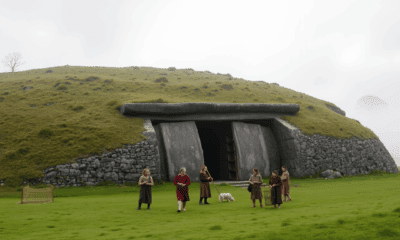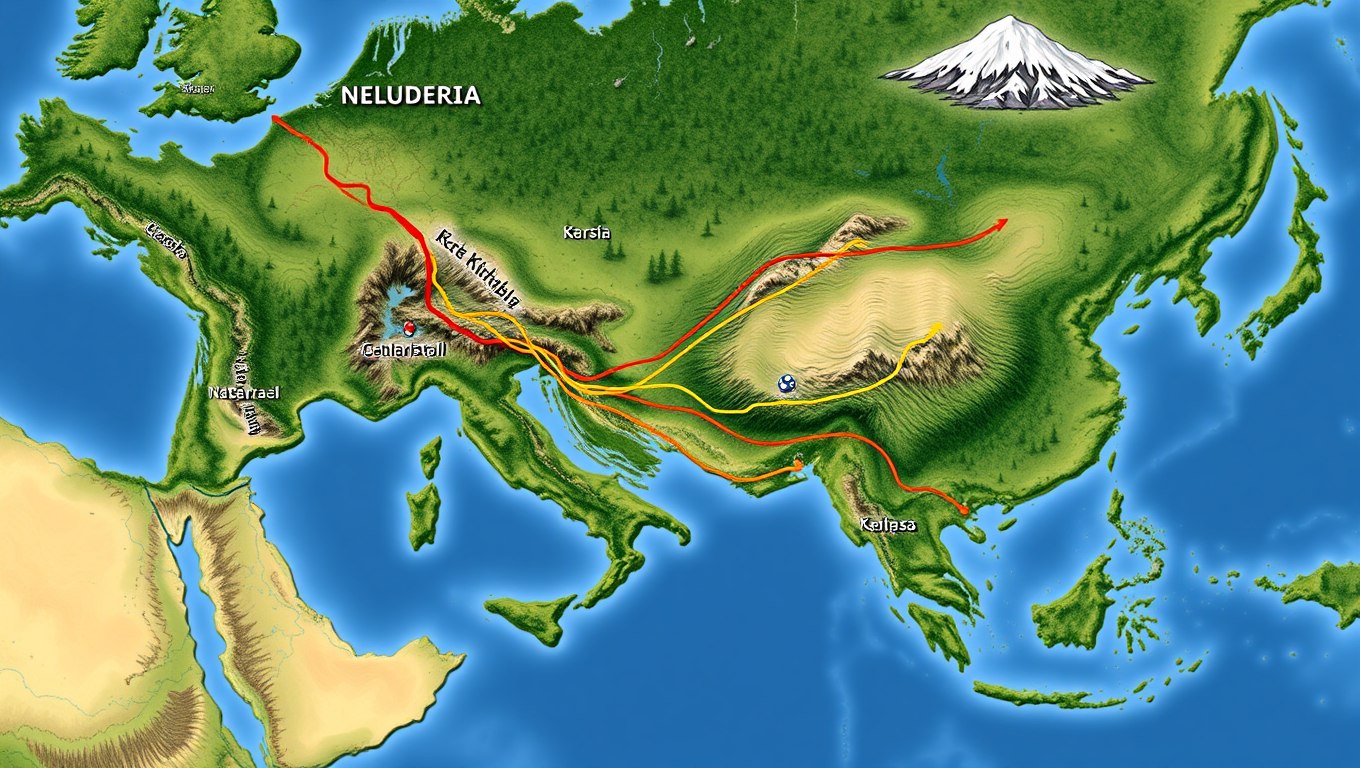While we try to keep things accurate, this content is part of an ongoing experiment and may not always be reliable.
Please double-check important details — we’re not responsible for how the information is used.
Ancient Civilizations
Uncovering Ancient Secrets: Stone Tools from South Africa’s Cave Reveal Prehistoric Connections
In a cave overlooking the ocean on the southern coast of South Africa, archaeologists discovered thousands of stone tools, created by ancient humans roughly 20,000 years ago. By examining tiny details in the chipped edges of the blades and stones, archaeologists are able to tell how the tools were made — which revealed that people were sharing crafting techniques over wide distances.

Ancient Civilizations
Unburying the Past: Ancient Footprints Rewrite American History
Footprints found in the ancient lakebeds of White Sands may prove that humans lived in North America 23,000 years ago — much earlier than previously believed. A new study using radiocarbon-dated mud bolsters earlier findings, making it the third line of evidence pointing to this revised timeline.
Ancient Civilizations
Debunking the Elite: New DNA Research Challenges Ancient Ireland’s Incestuous Social Hierarchy
DNA from a skull found at Newgrange once sparked theories of a royal incestuous elite in ancient Ireland, but new research reveals no signs of such a hierarchy. Instead, evidence suggests a surprisingly egalitarian farming society that valued collective living and ritual.
Ancient Civilizations
“Uncovering Neanderthals’ Ancient Superhighways: A 2,000-Mile Journey Across Eurasia”
Neanderthals may have trekked thousands of miles across Eurasia much faster than we ever imagined. New computer simulations suggest they used river valleys like natural highways to cross daunting landscapes during warmer climate windows. These findings not only help solve a long-standing archaeological mystery but also point to the likelihood of encounters and interbreeding with other ancient human species like the Denisovans.
-

 Detectors3 months ago
Detectors3 months agoA New Horizon for Vision: How Gold Nanoparticles May Restore People’s Sight
-

 Earth & Climate4 months ago
Earth & Climate4 months agoRetiring Abroad Can Be Lonely Business
-

 Cancer4 months ago
Cancer4 months agoRevolutionizing Quantum Communication: Direct Connections Between Multiple Processors
-

 Agriculture and Food4 months ago
Agriculture and Food4 months ago“A Sustainable Solution: Researchers Create Hybrid Cheese with 25% Pea Protein”
-

 Diseases and Conditions4 months ago
Diseases and Conditions4 months agoReducing Falls Among Elderly Women with Polypharmacy through Exercise Intervention
-

 Albert Einstein4 months ago
Albert Einstein4 months agoHarnessing Water Waves: A Breakthrough in Controlling Floating Objects
-

 Chemistry3 months ago
Chemistry3 months ago“Unveiling Hidden Patterns: A New Twist on Interference Phenomena”
-

 Earth & Climate3 months ago
Earth & Climate3 months agoHousehold Electricity Three Times More Expensive Than Upcoming ‘Eco-Friendly’ Aviation E-Fuels, Study Reveals





























